What's worse than a player who underperforms or fails to meet expectations? One who can be great one day and horrid the next.
As we move closer to the start of spring training, here is the biggest question mark for each MLB team.
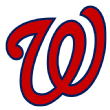 Washington Nationals: Bryce Harper
Washington Nationals: Bryce Harper
Since 2000, there have been 30 players who have posted at least 8.5 WAR in a season, not counting Mike Trout and Mookie Betts from 2016. Of those 30 players, here are the five biggest drop-offs the following season:
Barry Bonds, 2004 to 2005: moinus-10.0
Bryce Harper, 2015 to 2016: minus-8.3
Scott Rolen, 2004 to 2005: minus-7.5
Adrian Beltre, 2004 to 2005: minus-6.3
Ichiro Suzuki, 2004 to 2005: minus-5.2
What was in the water in the winter of 2004? Weird. Anyway, Bonds and Rolen were injured the following season, while Ichiro fell from a .372 average to .303, with worse defensive metrics. Beltre is the comparable guy here to Harper, falling from .334 and 48 home runs with the Dodgers to .255 and 19 home runs with the Mariners. Some of that decline resulted from Safeco Field, but 2004 was also a stone-cold fluke for Beltre; from 1999 to 2009, he never had an OPS+ above 114 except for 2004, when he posted a 163 mark. (Beltre, of course, has since had a remarkable run from 2010 to 2016, averaging a 133 OPS+.)
It’s possible that Harper’s 2015 turns out to be a fluke similar to Beltre’s 2004. It’s also possible that injuries affected Harper in 2016 after that red-hot April. While his walk and strikeout rates remained steady, his BABIP fell from .352 in 2014 and .369 in 2015 to .264 in 2016. His rate of home runs on fly balls fell from 16.8 percent in 2015 to 10.1 percent. His overall rate of fly balls actually went up in 2016; he just wasn’t hitting them as far -- his average fly-ball distance fell 26 feet.
The projection systems take the middle ground between 2015 and 2016. Let’s see if Harper can stay healthy and come closer to those MVP numbers again.
After having a rib removed to relieve pressure on nerves near the neck and shoulder -- an issue known as thoracic outlet syndrome -- Harvey is expected to be ready for the start of the season, but the history of pitchers who underwent TOS surgery is a mixed bag. Toss in his previous Tommy John surgery and, at minimum, Harvey’s innings likely will be an issue once again, even if he’s pitching well.
He was great in 2015, when he won the batting title, a Gold Glove and led the National League in hits and steals, but he tested positive for PEDs after that season -- reportedly during spring training last year -- and hit just .268/.305/.335 after serving his 80-game suspension. Gordon relies on batting average but lacks power and walks, so if he’s not hitting .300, he’s not bringing much to the table offensively.
 Philadelphia Phillies: Vince Velasquez
Philadelphia Phillies: Vince Velasquez
He had one of the most dominant starts of 2016 when he threw a three-hit, 16-strikeout shutout against the Padres in April, displaying a swing-and-miss high fastball and sharp-breaking curveball. He finished with 152 K’s in 131 innings but also missed time with a sore biceps. Velasquez has a lengthy injury history going back to high school, and he struggled in the second half (5.33 ERA) of last season before getting shut down in early September. There’s upside here, but also a chance he won’t hold up physically to the demands of starting.
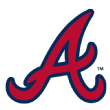 Atlanta Braves: Freddie Freeman
Atlanta Braves: Freddie Freeman
This is all about whether the monster second half that propelled him to a sixth-place finish in the MVP vote is a new level of ability. He hit .323/.433/.634 after the break and finished with 34 home runs -- nearly matching his 36 of the previous two seasons combined. Freeman started pulling the ball less often -- as he also did in 2013, when he hit .319 -- but was still hitting the ball out of the park.
What to expect from Heyward? Video surfaced this offseason of Heyward working to retool his swing. By the end of 2016, he struggled catching up to even mediocre fastballs; he hit just .230/.306/.325, followed by a .104 mark in the postseason (5-for-48, 13 strikeouts, one walk). If he struggles again, you could see him losing playing time; on the other hand, he hit .293 with a .359 OBP in 2015.
 St. Louis Cardinals: Adam Wainwright
St. Louis Cardinals: Adam Wainwright
He made 33 starts in his return from a torn Achilles tendon, but there wasn’t much other good news as he posted a career-worst 4.62 ERA, leading the NL in hits and earned runs allowed. His fastball velocity was the same as before, sitting 90-91, and his curveball spin rates and inches of break were similar, so the stuff was there, but he still got hit hard. The curveball, in particular, was much less effective as batters slugged .362 against it compared to .200 in 2014. At 35, are his best days behind him?
 Pittsburgh Pirates: Andrew McCutchen
Pittsburgh Pirates: Andrew McCutchen
His case has been much discussed, and the Pirates were clearly shopping him around in the offseason. He’s still here, although you have to think the club will at least move him off center field, where his defensive metrics were horrible, which helps explain a decline in WAR from 4.9 to minus-0.7. He also had his worst year at the plate, contributing 31 fewer runs above the average hitter compared to 2015. Injuries? Lost confidence? Turning old at 29?
 Milwaukee Brewers: Keon Broxton
Milwaukee Brewers: Keon Broxton
Acquired from the Pirates, Broxton came up in the second half and surprised with an all-around game, showing power (nine home runs in 75 games), stealing 23 bases, drawing walks and playing good defense in center. His 2.1 WAR over 244 plate appearances translates to 5.2 over 600. He’ll also turn 27 in May, and he strikes out a ton (36.1 percent K rate). He could be one of those under-the-radar stars, or the strikeouts could eat him alive.
 Cincinnati Reds: Brandon Finnegan
Cincinnati Reds: Brandon Finnegan
I had him pegged as a reliever all the way, but the Reds let him start and he went 10-9 with a 3.98 ERA while making it through 31 outings. The negatives: 84 walks, 29 home runs and a 5.19 FIP. He has decent velocity for a lefty -- 91.7 mph average fastball, touching 95 -- but needs to throw more strikes to become more than a back-of-the-rotation starter.
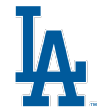 Los Angeles Dodgers: Yasiel Puig
Los Angeles Dodgers: Yasiel Puig
Well … he did hit .281/.338/.561 in September after his return from the minors. I’d put the odds of seeing 2013-14 Puig over a full season at less than 10 percent, in part because pitchers have learned they can use his aggressiveness against him by throwing more slow stuff (he hit .327 against changeups in 2013 but just .172 in 2016).
 San Francisco Giants: Joe Panik
San Francisco Giants: Joe Panik
He looked like a potential batting-title contender after hitting .312 in his first full season in 2015, then slumped to .239, even though he walked more than he struck out. He had the second-lowest average on balls in play of all qualifiers, .245, in part due to some bad luck on line drives. Given his contact ability, he’ll do much better than a .239 mark in 2017, but he’ll have to drive the ball more to hit .300 again.
 Colorado Rockies: Tyler Anderson
Colorado Rockies: Tyler Anderson
The first-round pick in 2011 was a feel-good story in 2016, reaching the majors and posting a 3.54 ERA in 19 starts as a rookie after missing all of 2015 with a stress fracture in his elbow. His 138 ERA+ ranked 19th in the majors among pitchers with at least 100 innings, right behind Jose Fernandez and ahead of Justin Verlander. His 3.59 FIP suggests it wasn’t a fluke, either.
This is Colorado, however, and he’s a lefty who doesn’t throw especially hard, so he’ll have to prove he’s the real deal all over -- and remain healthy as well.
 Arizona Diamondbacks: Zack Greinke
Arizona Diamondbacks: Zack Greinke
Really, you could go with the entire rotation here: Greinke, Robbie Ray, Shelby Miller, Taijuan Walker. We’ll go with Greinke given his wide swing in results from 2015 to 2016 and huge contract that amps up the expectations of him.
 San Diego Padres: Ryan Schimpf
San Diego Padres: Ryan Schimpf
He’s listed at 5-foot-9, which may be a little generous, but the minor league veteran reached the majors at age 28 and slugged 20 home runs in just 276 at-bats -- and 35 between Triple-A and the majors. He also hit .217 for the Padres and fanned in nearly a third of his plate appearances. You can live with the .217 average if he walks and hit home runs, but decline in either area means he could be back in the minors.
And as Tony Blengino of Fangraphs surmised, Schimpf's production can be expected to dip: "... the K's likely remain, a lot of the fly balls go away, and his projected production falls off of the table. Players like this simply don’t last."
Pablo Sandoval is another candidate, but let’s go with the Cy Young winner. His strikeout rate improved just 1 percent from 2015, his walk rate decreased just 1.6 percent and his ground ball rate actually fell 2.1 percent, yet his ERA fell from 4.92 to 3.15. He credited the improvement to throwing his sinker more instead of his fastball (he threw it 40.6 percent of the time versus 18.5 percent in 2015), but how much of his success was simply good luck?
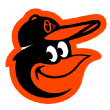 Baltimore Orioles: Chris Davis
Baltimore Orioles: Chris Davis
His OPS totals the past four seasons: 1.004, .704, .923, .792. He was a terrific player in 2013 and 2015, mediocre in 2014 and 2016. If you believe in patterns, 2017 will be a good year.
The mechanical changes he made late in 2015 with the Pirates produced a 20-win season, 3.18 ERA and career-high 195 innings; my fantasy team thanks you, Mr. Happ! The peripherals weren’t as strong -- 3.96 FIP -- and while you’d have to expect some slight regression, I happen to like his chances to have another sub-4.00 ERA.
 New York Yankees: Michael Pineda
New York Yankees: Michael Pineda
Winner of the Most Frustrating Pitcher on the Planet Award, given out by the BBWAA in a special ceremony held in December at the NYY Steakhouse at Yankee Stadium. Pineda finished third in the American League in strikeout rate among qualified starters and third in K-BB rate -- and 35th out of 39 in ERA. His slider produced a 41.8 percent strikeout rate, but it’s getting to two strikes that’s his problem; batters tattooed his fastball to the tune of a .348/.416/.621 line. If he can command the fastball better, he could be a sleeper Cy Young candidate. If not, he could post a 4.82 ERA again.
One reason the Rays could sneak up on everyone is this guy. He missed all of 2015 and nearly all of 2016 after Tommy John surgery, finally returning to make five late-season starts with an ugly 8.59 ERA. If he regains the feel of his changeup, maybe he can come close to the pitcher who had a 2.82 ERA over 2013-14.
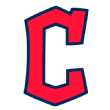 Cleveland Indians: Michael Brantley
Cleveland Indians: Michael Brantley
As with Cobb, this one’s all about health. Brantley was supposed to be ready early in 2016 after offseason shoulder surgery, but he played just 11 games and eventually underwent another procedure in August. He was third in the MVP voting in 2014 and posted similar numbers in 2015, but two surgeries and a missed season leave him as a big question mark at the age of 30.
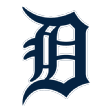 Detroit Tigers: Jordan Zimmermann
Detroit Tigers: Jordan Zimmermann
I wasn’t a fan of this signing, as Zimmermann was coming off a so-so season in 2015 in which his home run rate shot up and his strikeout rate dropped, plus he was going to the tougher league. He had a hit-lucky 0.55 ERA in April (just 23 strikeouts in 33 innings), predictably regressed and then battled some injuries. He went down with a neck injury in August and got shelled in his one start in September. Is he a top-of-the-rotation starter the Tigers expected when they gave him $110 million or a very expensive, injury-prone fifth starter?
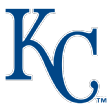 Kansas City Royals: Alex Gordon
Kansas City Royals: Alex Gordon
Gordon was an in-demand free agent after the Royals’ 2015 title, but he returned to Kansas City at a small hometown discount and then proceeded to have his worst season since 2010. After averaging 5.4 WAR per season from 2011 to 2015, he plummeted to 0.8. His power numbers and walk rate were average, but the K’s were out of control. The Royals hope it was because of a wrist injury, but he’ll also be 33.
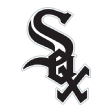 Chicago White Sox: Lucas Giolito
Chicago White Sox: Lucas Giolito
The future ace was part of the haul for Adam Eaton. Is Giolito regarded as the top pitching prospect in baseball entering 2016, or the pitcher who didn’t show enough swing-and-miss stuff during his time in the majors (just 25 misses in 182 swings)?
Another young pitcher who has dominated in the minors, including a 2.79 in 30 Triple-A starts, but was more overmatched in the majors than Angola against the Dream Team. Berrios allowed a .310/.409/.523 batting line, which means the average hitter against him hit something like Jose Altuve. That’s not good. If he can regain his confidence, the stuff is still there, although Twins fans probably have to temper the idea of him as a future No. 1.
He was so bad with the Astros they finally gave up on him and released him in August. He signed two days later with the Rangers and hit .284/.362/.543 down the stretch, similar to the numbers he put up with the Brewers in 2013 and 2014, when he made two All-Star appearances. Did he get healthy after battling a hip issue? Was it just a needed change of scenery? Small sample size? The Rangers brought him back on a low-risk, one-year deal. I’m skeptical.
After two awful seasons with the Brewers, Segura landed with the Diamondbacks and hit .319 with 68 extra-base hits. Sure, there may have been some BABIP good fortune in there, but you don’t go from 27 extra-base hits to 68 on luck. In Segura’s case, he lowered his hands in his stance, from starting up at his shoulders to starting at his waist, resulting in more of an uppercut swing and more extra-base power. There’s obvious skepticism he can repeat his 5.7-WAR season, but I’m a believer.
 Houston Astros: Dallas Keuchel
Houston Astros: Dallas Keuchel
He was the real deal by winning the Cy Young Award in 2015, showing pinpoint command, a surprising strikeout rate and incredible ground ball rate. His 2016 season ended early with shoulder inflammation as his ERA rose from 2.48 to 4.55. The safe thing is to split the difference, but watch his health in spring training.
 Los Angeles Angels: Matt Shoemaker
Los Angeles Angels: Matt Shoemaker
He’s similar to Keuchel in that he relies on location and changing speeds instead of an overpowering fastball. Shoemaker's change/splitter was terrific in 2014, not as terrific in 2015 and still not terrific at the start of 2016, when he was demoted to the minors after a 9.15 ERA in April. He came back strong, however, and posted a 2.83 ERA over his final 20 starts with an impressive 121-17 K-BB ratio. If he’s that good over a full season and Garrett Richards is healthy, don’t ignore the Angels.
Well, that was ugly. He landed on the DL in August with a muscle strain in his forearm, but what caused the 5.74 ERA up to that point? His fastball velocity was the same, although it seemed to lack the late, diving action that propelled him to a third-place Cy Young finish in 2015. As a result, batters hit .346 against his fastball, up from .266 in 2015. Baseball history is rife with pitchers who burned out quickly.










